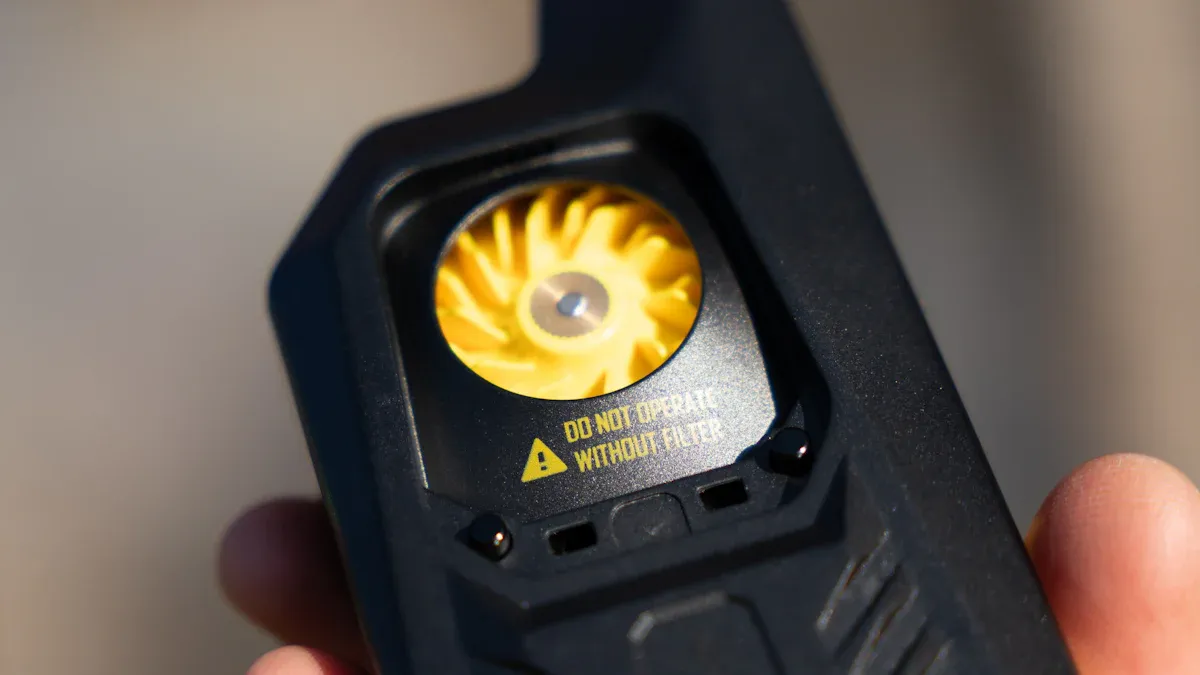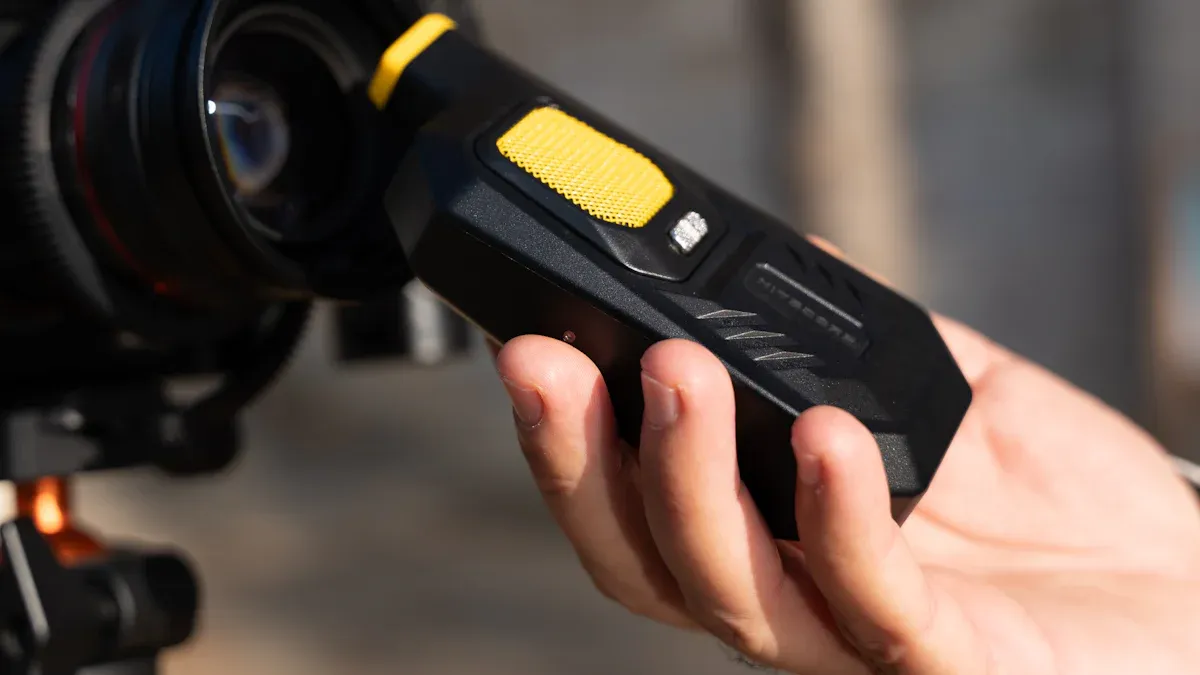Daily Flashlight Maintenance: How to Keep Your Light Working When You Need It

Imagine reaching for your flashlight during a power outage, only to find it dead or malfunctioning. Frustrating, right? Flashlight maintenance is a daily essential that ensures your light works when you need it most. By taking a few moments to check your helius flashlight, you can avoid battery corrosion and keep it reliable for emergencies.
Key Takeaways
Check your flashlight batteries often for rust or leaks. Clean them to avoid damage and keep it working well.
Wipe the outside of your flashlight to keep it clean. Look at the lens to make sure it is clear. A clean flashlight works best and lasts longer.
Store your flashlight in a cool, dry spot. Take out the batteries if you won’t use it for a while. This stops leaks and keeps it ready for emergencies.
Why Flashlight Maintenance is Essential
Risks of Neglecting Flashlight Maintenance
Skipping flashlight maintenance might seem harmless, but it can lead to serious problems when you least expect them. Imagine being stuck in a survival situation or a power outage with a flashlight that won’t turn on. Neglecting maintenance can compromise your safety by leaving you disoriented and unable to navigate in the dark. It’s not just about inconvenience—it’s about enhancing safety for you and those around you.
Failing to maintain your flashlight can also have financial consequences. A poorly maintained flashlight might stop working altogether, forcing you to spend money on repairs or replacements. For property owners, non-functional emergency lighting can lead to legal liabilities if someone gets injured due to inadequate lighting.
Here’s a quick look at the risks:
Compromised Safety: A dead flashlight during emergencies can cause panic and confusion.
Increased Liability: Non-functional flashlights can result in legal issues if injuries occur.
Financial Implications: Skipping maintenance can lead to higher costs in the long run.
By taking a few minutes each day to check your flashlight, you can avoid these risks and ensure reliable illumination when it matters most.
Benefits of Reliable Flashlights in Emergencies
A reliable flashlight can be a lifesaver in emergencies. Whether you’re navigating through a dark building or signaling for help, having dependable lighting makes all the difference. Using flashlights in emergencies helps you stay calm and find your way to safety.
Flashlights are also essential for survival situations. If you’re lost or in danger, a flashlight can help rescue teams locate you quickly. It’s not just about seeing in the dark—it’s about being seen. Reliable illumination can mean the difference between being found or left stranded.
Here’s why choosing the right flashlight and maintaining it is so important:
It helps you signal for help in low-visibility situations.
It aids in navigating safely during emergencies.
Rescue teams rely on flashlights to locate individuals during disasters.
By keeping your flashlight in top condition, you’re not just enhancing safety for yourself—you’re also making it easier for others to assist you when needed.
Essential Tips for Flashlight Maintenance

Inspect Batteries for Corrosion and Charge
Your flashlight’s performance depends heavily on its batteries. Start by removing the batteries and inspecting them for any signs of corrosion. Corroded batteries can damage the internal components and reduce the flashlight’s lifespan. If you notice any white or greenish residue, clean it off carefully using a cotton swab dipped in vinegar or baking soda solution.
Next, check the charge level. If you’re using rechargeable batteries, ensure they’re fully charged. For disposable batteries, replace them if they’re nearing the end of their life. Always keep spare batteries handy to avoid being caught off guard during emergencies.
Tip: Use high-quality batteries to ensure optimal performance and reduce the risk of leakage.
Clean the Exterior to Remove Dirt and Grime
A clean and functional flashlight starts with a spotless exterior. Dirt and grime can accumulate over time, especially if you use your flashlight outdoors. Wipe down the body with a damp cloth to remove dust and debris. For stubborn stains, use a mild soap solution.
Pay special attention to the buttons and switches. Dirt can get trapped here, making them harder to operate. Keeping the exterior clean not only improves functionality but also extends the life of your flashlight.
Check the Lens for Clarity and Damage
The lens plays a crucial role in directing the light beam. Over time, it can become cloudy or scratched, affecting the flashlight’s brightness. Inspect the lens regularly for any signs of damage. If it’s dirty, clean it gently with a microfiber cloth. Avoid using abrasive materials that could scratch the surface.
For reflector and lens maintenance, ensure the reflector behind the lens is also clean. A clear lens and reflector guarantee optimal performance, providing you with a bright and focused beam when you need it most.
Test the Helius Flashlight for Functionality
Testing your helius flashlight ensures it’s ready for action. Follow these steps to check its functionality:
Drop the flashlight from a moderate height onto a hard surface to test its impact resistance.
Immerse it in water or expose it to dust to verify its waterproof and dustproof capabilities.
Test the batteries under extreme temperatures to ensure they perform safely.
Use the flashlight outdoors to assess its brightness, beam distance, and runtime in real-world conditions.
Regular testing helps you identify potential issues early, ensuring your flashlight remains reliable in emergencies. Proper maintenance and care will keep your flashlight in top shape for years to come.
Weekly and Monthly Flashlight Maintenance
Lubricate Threads and O-Rings
Keeping the threads and O-rings of your flashlight in good condition is essential for smooth operation and durability. Over time, dirt and debris can accumulate in the threads where the flashlight’s components screw together. This buildup can cause wear and make it harder to assemble or disassemble your flashlight. To prevent this, apply a thin coating of silicone-based lubricant after cleaning the threads. This simple step ensures smooth operation and protects the threads from damage.
For O-rings, lubrication enhances the resistance seal, keeping your flashlight waterproof and dustproof. Use a small dab of silicone grease for both the threads and O-rings. Here’s a quick look at recommended lubricants:
Lubricant | Suitability for Flashlight Threads | Suitability for O-rings |
|---|---|---|
Nyogel | Very Good | Very Good |
Super-Lube | Very Good | Very Good |
Krytox | Excellent | Excellent |
Petroleum Jelly | Not Recommended | Not Recommended |
Moly Grease | Not Recommended | Not Recommended |
Lithium Grease | Not Recommended | Not Recommended |
Regular lubrication during your routine maintenance keeps your flashlight functioning like new.
Inspect and Replace Worn Seals
Seals play a critical role in protecting your flashlight from water and dust. Over time, these seals can wear out, compromising the flashlight’s performance. During your monthly check-ups, inspect the O-rings and other seals for cracks, tears, or signs of wear. If you notice any damage, replace them immediately to maintain the flashlight’s waterproof and dustproof capabilities.
Replacing worn seals is a straightforward process. Most flashlights come with spare O-rings, or you can purchase replacements from the manufacturer. Taking this small step ensures your flashlight stays reliable, even in harsh conditions.
Deep Clean the Battery Compartment
The battery compartment is the heart of your flashlight, and keeping it clean is vital for optimal performance. Start by turning off the flashlight and removing the batteries. Check for corrosion or debris inside the compartment. If you spot any corrosion, mix equal parts vinegar or lemon juice with water to create a cleaning solution. Use a cotton swab or cloth dipped in the solution to scrub the contacts gently.
Once the contacts are clean, wipe away any moisture and let the compartment dry completely before reassembling the flashlight. Regular deep cleaning as part of your routine maintenance prevents issues like poor battery connections and extends the life of your flashlight. Remember, proper battery care is key to keeping your flashlight ready for emergencies.
Tip: Always handle batteries with care and store them properly to avoid leaks or damage.
Best Practices for Storing Flashlights

Store in a Cool, Dry Place
Where you store your flashlight matters more than you might think. A cool, dry place is ideal for keeping your flashlight in top condition. Moisture can sneak into the internal components, damaging the battery compartment and electrical connections. Extreme temperatures can also harm the flashlight’s materials and reduce battery performance.
To avoid these issues, follow these simple tips:
Keep your flashlight away from direct sunlight. Prolonged exposure can degrade its materials and shorten its lifespan.
Avoid storing it in damp areas like basements or bathrooms. Moisture can lead to corrosion and other damage.
Choose a spot with stable temperatures, like a drawer or cabinet in your living space.
Proper storage not only protects your flashlight but also ensures it’s ready to use when you need it most.
Remove Batteries for Long-Term Storage
If you’re not planning to use your flashlight for a while, take the batteries out. Leaving them inside can lead to leakage and corrosion, which can ruin the internal components. Old batteries can also diminish the flashlight’s performance, leaving you with dim light or none at all when you need it.
Removing the batteries has other benefits too. It prevents accidental activation, which could drain the batteries and leave you unprepared during emergencies. Plus, it reduces the risk of overheating, which can pose a fire hazard, especially if the flashlight is stored near flammable materials.
For the best results, store the batteries separately in a cool, dry place. This simple step is one of the most effective battery best practices and ensures your flashlight stays in great shape for years to come.
Tip: Always handle batteries with care and check them for damage before reinserting them into your flashlight.
Troubleshooting Flashlight Issues
Fixing Flickering or Dim Lights
Flickering or dim lights can be frustrating, especially when you need your flashlight to work at its best. Luckily, you can fix this issue with a few simple steps:
Clean the reflector or lens to remove dirt that might block the light.
Tighten the flashlight’s end cap to ensure proper contact with the switch.
Replace the bulb or LED module if it’s worn out or damaged.
Sometimes, flickering happens because the battery isn’t seated properly. Double-check that it’s inserted correctly and has enough charge. These quick fixes can restore your flashlight’s brightness and keep it reliable.
Resolving Failure to Turn On
When your flashlight refuses to turn on, it’s time for some troubleshooting. Start by checking the battery. If it’s discharged or stored improperly, replace it or recharge it. Inspect the flashlight’s switch for corrosion or damage. Dirt inside the flashlight can also disrupt the circuit, so clean the contacts and threads thoroughly.
If the problem persists, examine the O-rings. Broken seals can let moisture and dirt in, affecting functionality. After trying these steps, and if the flashlight still doesn’t work, consider contacting the manufacturer for repair options. A little effort can save you from replacing the entire flashlight.
Addressing Internal Component Damage
Internal damage can cause more serious issues, but it’s not always the end of the road for your flashlight. For flickering lights, clean the battery contacts or repair the switch. If the beam pattern looks inconsistent, clean the lens and reflector or replace the LED chip.
When the flashlight completely fails, check the battery and clean the threads. If these steps don’t help, reach out to the manufacturer. Many offer repair services or replacement parts. Taking care of internal components ensures your flashlight stays dependable for years.
Taking care of your flashlight is a daily essential that ensures it’s ready for emergencies. Simple habits like cleaning and testing can extend the lifespan of your flashlight. Consistent care leads to lifespan maximization and reliable performance. By following these steps, you’ll always have dependable light when you need it most.
FAQ
How often should I clean my flashlight?
You should clean your flashlight weekly. Focus on the exterior, lens, and battery compartment to keep it functioning properly.
What’s the best way to store spare batteries?
Store spare batteries in a cool, dry place. Use a battery case to prevent accidental discharge or damage.
Tip: Check your spare batteries every few months for leaks or corrosion.
Can I use any lubricant for flashlight threads?
No, use silicone-based lubricants like Nyogel or Krytox. Avoid petroleum jelly or grease, as they can damage the flashlight’s seals.
Note: Proper lubrication ensures smooth operation and extends your flashlight’s lifespan.
See Also
Key Strategies for Keeping Your Flashlight in Top Shape
Maximize Your Flashlight's Battery Life with These Tips
Comprehensive Tips for Proper Flashlight Care and Cleaning
Designed for Longevity: Our Emergency Flashlight's Durability
